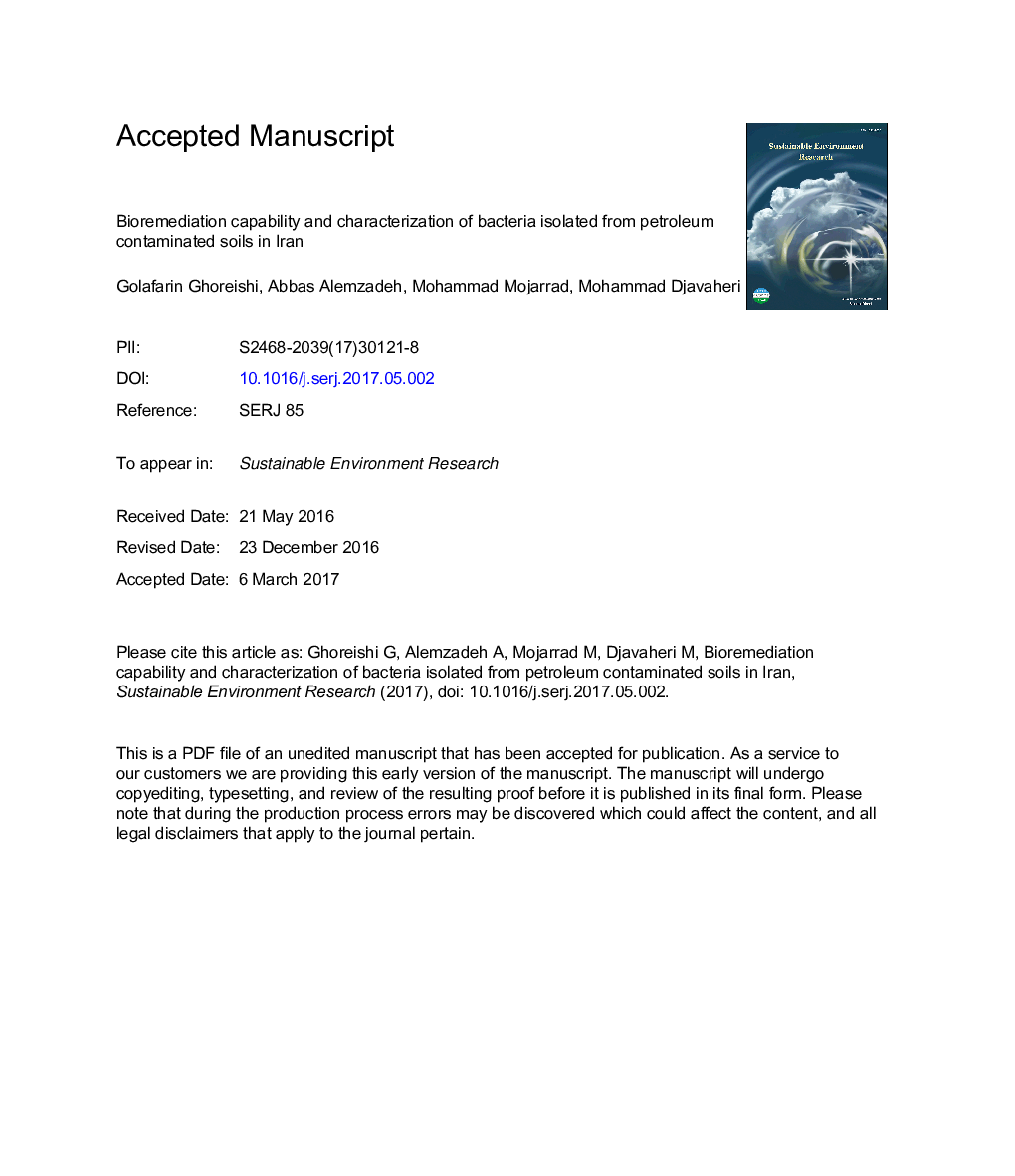| Article ID | Journal | Published Year | Pages | File Type |
|---|---|---|---|---|
| 8862963 | Sustainable Environment Research | 2017 | 30 Pages |
Abstract
This study was carried out to isolate bacteria for bioremediation of petroleum polluted soils. Five samples were used for isolation in this study. They were four soil samples in addition to one kerosene sample. The soil samples including soils contaminated by crude oil and gas oil and two soil samples with no outward contamination which were collected from Shiraz Oil Refinery sites. Seven strains were selected among the isolated colonies for further experiments. The selected isolates were cultured in standard succinate medium (SSM) minimal medium in which 2.5% v/v kerosene was used as carbon source. In another bacterial SSM culture, carbon, sulfur or nitrogen source was removed and 20% v/v kerosene added to check the ability of isolates to utilizekerosene as sole source for C, N and S. Finally, cultures of four strains with higher growth in modified SSM cultures were selected for GC analysis. In this study they were named C2 and C4 which were isolated from crude oil contaminated soil and SI1 and SI2 isolated from soils with no outward contamination. GC analysis showed that C2 could degrade 69% of 5% v/v kerosene in 7Â d, while C4 and SI1 degraded 48% and 42% of 5% v/v kerosene during this 7-d period respectively, and the degradation ability of SI2 was 38% after 7Â d. Analysis of 16S rRNA gene showed that C2 was close to Citrobacter sedlakii, C4 and SI1 were related to Entrobacter hormeachei and SI2 was close to Entrobacter cloacae, respectively.
Keywords
Related Topics
Life Sciences
Environmental Science
Environmental Engineering
Authors
Golafarin Ghoreishi, Abbas Alemzadeh, Mohammad Mojarrad, Mohammad Djavaheri,
